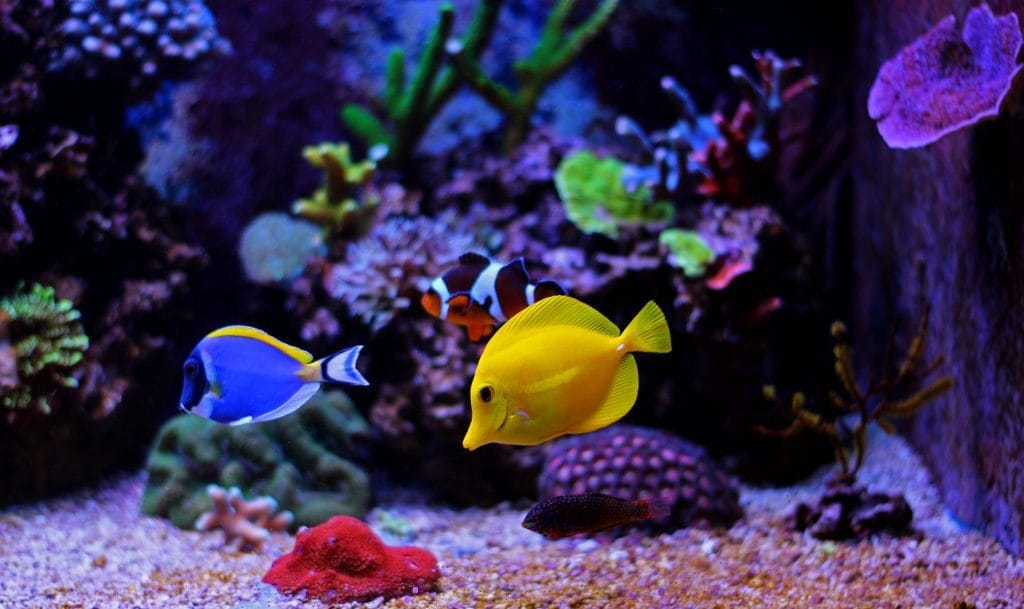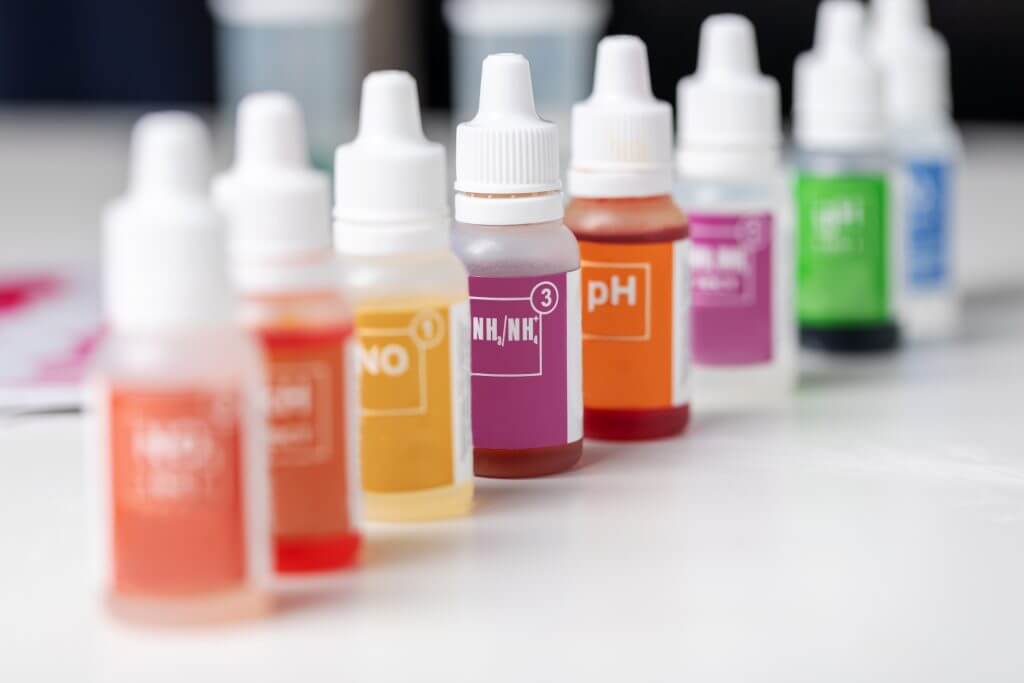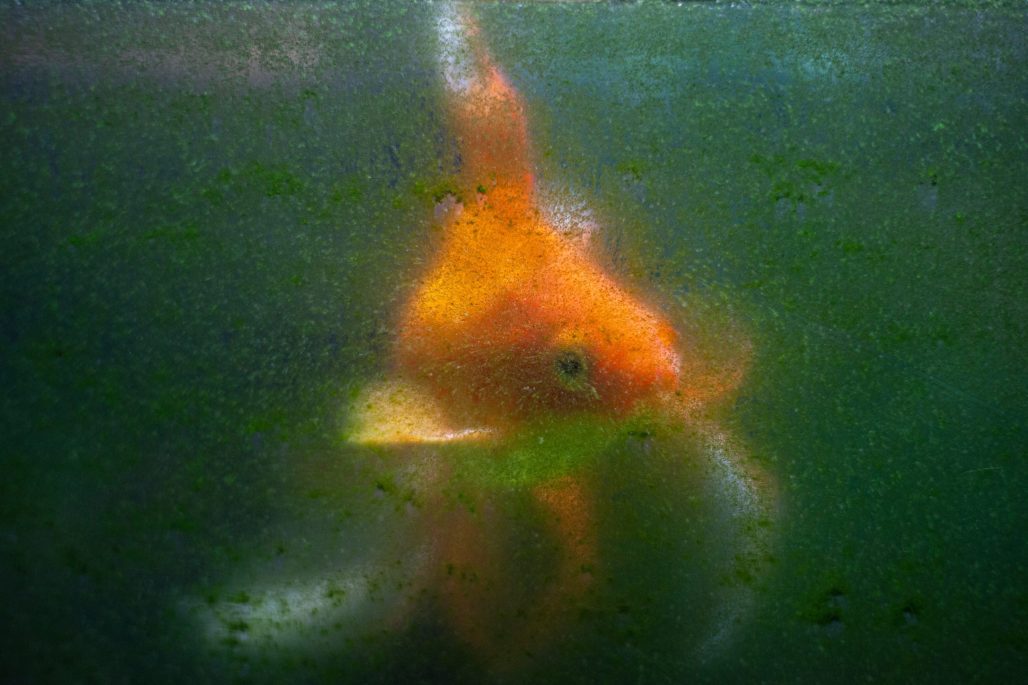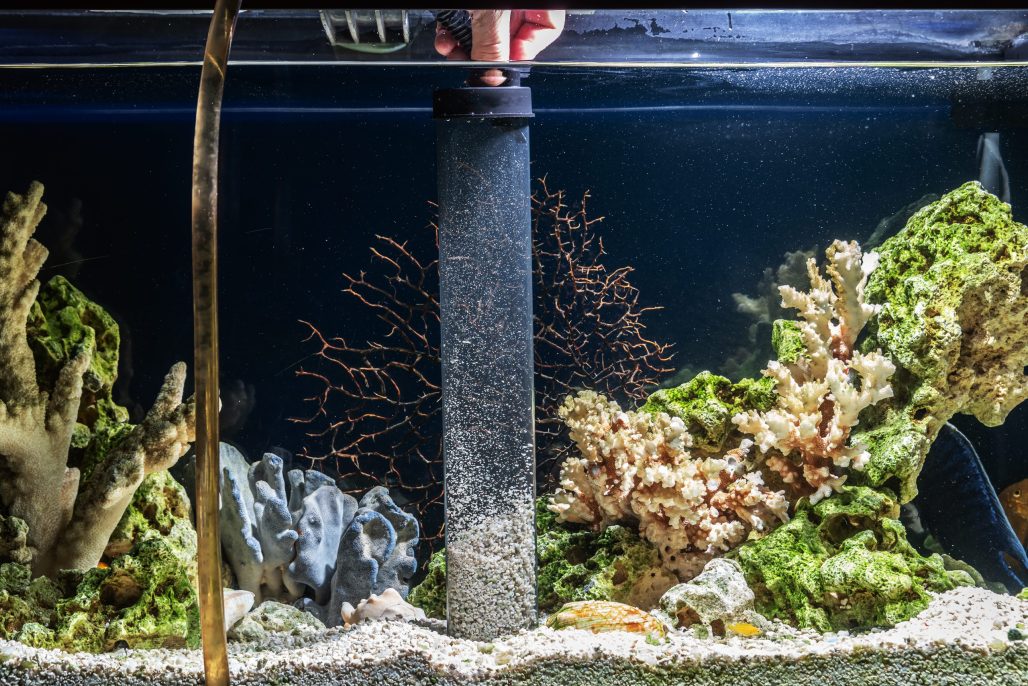
How to Clean Your Aquarium
When people find out you keep fish, they probably imagine a crusty, algae-coated tank where you can barely see anything swimming inside. But with just a few easy steps, you can keep your aquarium looking like a beautiful work of art. Follow along as we share our top tips for cleaning your fish tank like a pro.
Before You Get Started…
There are several frequently answered questions we often hear from beginners, so let’s address those first:
How often do you need to clean a fish aquarium?
Some people say you should clean a fish tank once a week, while others say once a month. The real answer is that it totally depends! Several factors include the size of your tank, how many fish you keep, and how much biological filtration (e.g., beneficial bacteria and live plants) you have. Fortunately, we have a free guide to help you figure out exactly what frequency is right for your aquarium.
Do you take the fish out of the tank when cleaning?
No, go ahead and leave your fish in the aquarium. You won’t be completely draining the aquarium, so there will be plenty of water left for them to swim in. Also, the process of catching them is more stressful for the fish than slowly cleaning around them.
There’s no need to catch the fish before cleaning an aquarium because it will only cause undue stress.
How long do you let water sit before putting fish in to reach the same temperature?
This old school piece of advice comes from the fact that municipalities often put chlorine in tap water (which is lethal to fish), but if you let the water sit out for 24 hours, the chlorine evaporates. Nowadays, chloramine (a more stable form of chlorine) is often used in tap water, and it does not evaporate over time. Instead, you need to dose a water conditioner to make the water safe for fish, and then you can immediately use the dechlorinated water for your aquarium with no wait time. Alternatively, using reverse osmosis water can help avoid harmful chemicals like chlorine and chloramine, ensuring better water quality for your aquarium.
What cleaning supplies do you need to get?
If this is your first aquarium, you may need to collect some tank maintenance materials, such as:
-
Aquarium water test kit
-
Bucket for holding dirty tank water
-
Algae scraper (for glass or acrylic)
-
Algae scraper blade attachment (for glass or acrylic)
-
Toothbrush for cleaning algae off decor or plants
-
Scissors for pruning plants
-
Dechlorinator (also known as water conditioner)
-
Glass cleaner
-
Towel for wiping up water spills
-
Glass-cleaning cloth or paper towel
-
Aquarium siphon (also known as a gravel vacuum)
When cleaning acrylic tanks, it is important to use non-abrasive tools to avoid scratching the tank walls. Gentler cleaning tools are recommended for these tanks.
(As an Amazon Associate, we earn from qualifying purchases, and commissions may be earned from the link above.)
How to Clean Your Aquarium
Now that we’ve cleared up some confusion about tank maintenance, here is a step-by-step guide for you to follow on a regular basis:
Step 1: Test the Water Quality
If your aquarium is newly established and has not been cycled yet, you need to test the fish tank water to determine if it has 0 ppm ammonia, 0 ppm nitrites, and less than 40 ppm nitrates. (For more info, find out how to cycle your aquarium.) Higher levels of these waste compounds can be dangerous for fish.
If your aquarium is already cycled, then the goal is to keep nitrate levels below 40 ppm. Measure the nitrates using a water test kit to determine how much water should be removed and if other steps need to be taken (based on our free guide to water changes).
A water test kit helps you determine if there are toxic levels of nitrogen waste compounds in the aquarium.

a set of liquid chemicals in tubes for testing water in an aquarium, close-up. High quality photo
Step 2: Remove Algae with an Algae Scraper
In order to maintain a clear view of our fish, scrub the tank walls with an algae scraper. If you have the blade attachment, it should be very easy to slice through any tough algae spots. Just make sure not to catch any substrate underneath the algae scraper, or you may end up scratching the glass or acrylic.
If algae have grown on the lid, you can easily rinse it off in the sink. (Don’t use soap or it may harm your fish.) Finally, if algae cover your aquarium decor, rocks, or plants, try using a clean toothbrush to gently brush it off, either over the sink or in the aquarium. Read our article on how to get rid of algae for more tips and tricks.
Keep algae under control by regularly removing it and balancing the lighting and nutrient levels in your aquarium.

Dirty glass aquarium. Goldfish behind the muddy glass. Green water in a fish house. Waterfowl care. Cleaning the aquarium forgotten by the owners. The magic fish.
Step 3: Prune the Plants
If you keep live aquarium plants, take this time to remove any dead leaves and trim down overgrown foliage. If you have tall stem plants, you can easily propagate them by cutting a few inches off the tops and replanting them into the substrate. If your Vallisneria or dwarf Sagittaria are spreading into unwanted areas, pull out the little runners and move them elsewhere. Lastly, if floating plants have completely covered the entire water surface, remove about 30% to 50% of them so that the plants below get enough light and the fish get enough oxygen.
Pruning helps plants to focus on delivering nutrients to the healthiest leaves, and it also allows light to reach leaves at the bottom of the stems.
Step 4: Turn off Equipment
Before removing any water, make sure to turn off or unplug all equipment. Aquarium heaters and filters are not meant to operate without water and therefore can become damaged when running in dry air.
Step 5: Use a Gravel Vacuum on the Substrate
Take out your nifty aquarium siphon and vacuum approximately one-third of the substrate. Move any decorations or hardscape as needed, since debris tends to collect underneath them. The siphon serves the dual purpose of not only removing fish waste, uneaten food, and dead leaves from the gravel or sand but also removing old tank water and the excess nitrates in them. Handle waste tank water with care to avoid health hazards, especially for vulnerable individuals like children or those with compromised immune systems.
Siphons are one of the most useful tools for easily changing water without having to use a cup or pitcher.

Step 6: Clean the Filter Media
At least once a month, you should clean the filter. Many beginners think of filters as black holes where fish poop and detritus magically disappear from the water. In reality, filters are more like trash cans that collect waste, but at the end of the day, someone is still responsible for taking out the trash can. In the same way, filters collect fish waste, but you must still regularly clean it to remove all the gunk before the filter gets clogged up or overflows.
If you have a hang-on-back, canister, or corner box filter, the easiest way to maintain it is to swish around and wash the filter media in your bucket of recently removed tank water. (Again, do not use soap, just water.) If you have a sponge filter, remove the foam portion and wring it multiple times in the bucket of old tank water. For decorations, rinse them in warm water to remove any debris. For more details, read the last section of our sponge filter article.

care for the aquarium filter in a freshwater aquarium. Cleaning and rinsing
Step 7: Refill the Water
At this point, you can finally refill the tank with fresh water that matches the temperature of the existing aquarium water. Human hands are able to detect temperatures within one or two degrees, so just adjust the faucet until the tap water feels like it has the same temperature. Empty out the bucket of old tank water (which can be used to feed indoor and outdoor plants), and refill it with tap water. You can either add dechlorinator into the bucket (dosed based on the bucket’s volume) or directly into the tank (dosed based on the aquarium’s volume). This is also your chance to add liquid fertilizer and/or root tabs for the substrate.
If you’re worried about messing up your aquascape or substrate, pour the new water into the aquarium through a colander or onto another solid surface (like your hand or a plastic bag) to lessen any disturbances.
Step 8: Turn on Equipment
Although you just spent all this time cleaning the tank, it probably looks dirtier than ever with all that particulate clouding up the water. Not to worry – turn on the heater and filter again, and within an hour or so, the debris will settle down or get sucked up by the filter.
Step 9: Wipe the Glass
For that extra, crystal-clear finish and to keep your fish tank clean, wipe down the outside walls of the tank with aquarium-safe glass and acrylic cleaner to remove any water spots and smudges. Also, clean off the dust that has collected on the lid, light, and aquarium stand. Now you have a truly Instagram-worthy aquarium ready to wow your friends and family!

Aquarium with beautiful fishes and green plants. Tropical exotic fishes swim in home freshwater aquarium.
Managing Multiple Tanks
Managing multiple fish tanks can be a challenging task, but with the right strategies, you can keep all your tanks clean and healthy. Here are some tips to help you stay on top of your aquarium maintenance:
-
Create a Schedule: Plan out your cleaning schedule in advance to ensure that each tank gets the attention it needs. Consider the size of each tank, the number of fish, and the type of filtration system. A well-thought-out schedule will help you manage your time effectively and prevent any tank from being neglected.
-
Use a Centralized Cleaning Station: Designate a specific area for cleaning supplies and equipment. This makes it easier to move from tank to tank without having to search for tools. Having everything in one place streamlines the cleaning process and saves time.
-
Standardize Your Cleaning Process: Use the same cleaning process for each tank to ensure consistency and efficiency. This not only makes the task more manageable but also helps you remember each step, reducing the likelihood of missing something important.
-
Monitor Water Quality: Regularly test the water quality in each tank to identify any potential issues before they become major problems. Keeping a log of your water test results can help you spot trends and address issues promptly.
By following these tips, you can maintain multiple fish tanks without feeling overwhelmed.
Tips for Efficient Cleaning
Cleaning multiple fish tanks can be time-consuming, but there are ways to make the process more efficient. Here are some tips to help you clean your tanks quickly and effectively:
-
Use a Gravel Vacuum with a Long Hose: This allows you to clean multiple tanks without having to move the vacuum. A long hose gives you the flexibility to reach different tanks from a single water source, making the cleaning process faster and more convenient.
-
Use a Magnetic Glass Cleaner: This handy tool makes it easy to clean the glass walls of multiple tanks without having to get your hands wet. Simply move the magnetic cleaner along the outside of the tank, and the internal magnet will scrub away algae and debris.
-
Use a Cleaning Cart: A cleaning cart can help you transport cleaning supplies and equipment from tank to tank. This is especially useful if you have tanks in different rooms or on different levels of your home.
-
Clean in Sections: Divide each tank into sections and clean one section at a time. This makes the process more manageable and ensures that you thoroughly clean each part of the tank without missing any spots.
By implementing these tips, you can keep your fish tanks clean with minimal effort.
Scheduling Cleanings
Scheduling cleanings for multiple fish tanks can be complex, but here are some tips to help you stay on track:
-
Create a Calendar: Plan out your cleaning schedule on a calendar to ensure that each tank gets cleaned on a regular basis. This visual aid helps you keep track of when each tank was last cleaned and when it needs attention again.
-
Set Reminders: Set reminders on your phone or computer to alert you when it’s time to clean each tank. This ensures that you don’t forget or delay important maintenance tasks.
-
Prioritize: Prioritize your cleanings based on the needs of each tank. For example, tanks with high fish loads or poor water quality may need to be cleaned more frequently. By focusing on the most critical tanks first, you can prevent issues from escalating.
-
Be Flexible: Be prepared to adjust your cleaning schedule as needed. For example, if you notice a sudden change in water quality, you may need to clean a tank more frequently. Flexibility allows you to respond to unexpected issues promptly.
By following these tips, you can maintain a consistent cleaning routine for all your fish tanks.
Troubleshooting Common Issues
Even with regular cleaning and maintenance, issues can still arise in your fish tanks. Here are some common problems and how to troubleshoot them:
-
Cloudy Water: Cloudy water can be caused by a variety of factors, including excess food, fish waste, and poor filtration. To troubleshoot, try reducing the amount of food you’re feeding your fish, increasing the frequency of water changes, and checking your filtration system. Ensuring that your filter is properly maintained and not clogged can also help clear up cloudy water.
-
Algae Growth: Algae growth can be caused by excess nutrients in the water, poor lighting, and inadequate filtration. To troubleshoot, try reducing the amount of food you’re feeding your fish, increasing the frequency of water changes, and adjusting your lighting schedule. Additionally, consider using an algae scraper or magnetic glass cleaner to remove algae from the tank walls.
-
Fish Disease: Fish disease can be caused by a variety of factors, including poor water quality, stress, and inadequate quarantine procedures. To troubleshoot, try testing your water quality, reducing stress on your fish, and implementing quarantine procedures for new fish. Regularly observing your fish for signs of illness and acting quickly can prevent the spread of disease.
By addressing these common issues promptly, you can keep your fish tanks healthy and your fish happy.
Identifying and Solving Water Quality Problems
Water quality problems can be a major issue in fish tanks, but identifying and solving them can be challenging. Here are some tips to help you maintain optimal water quality:
-
Test Your Water Quality: Regularly test your water quality to identify any potential issues. Use a reliable water test kit to measure parameters such as ammonia, nitrites, nitrates, pH, and hardness.
-
Identify the Source of the Problem: Once you’ve identified a water quality issue, try to determine the source of the problem. For example, is it caused by excess food, fish waste, or poor filtration? Understanding the root cause will help you take appropriate corrective action.
-
Take Corrective Action: Once you’ve identified the source of the problem, take corrective action to address it. For example, if the issue is caused by excess food, try reducing the amount of food you’re feeding your fish. If fish waste is the problem, consider increasing the frequency of water changes and cleaning the substrate more thoroughly.
-
Monitor and Adjust: Continue to monitor your water quality and adjust your corrective actions as needed. Regular testing and observation will help you maintain a healthy environment for your fish.
By following these steps, you can effectively manage water quality problems and keep your fish tanks in top condition.
Related Posts
- Garden Pond Cleaning & Maintenance Service: Essential Care for a Thriving Aquatic Environment
- Pond Maintenance Contract: Benefits of Monthly Visits for Regular Pond Care
- 7 Essential Tools for DIY Pond Maintenance: Practical Solutions for Effortless Care and Maintenance
- Top Steps for Pond Planning Permission: Ensure Your Project’s Success



